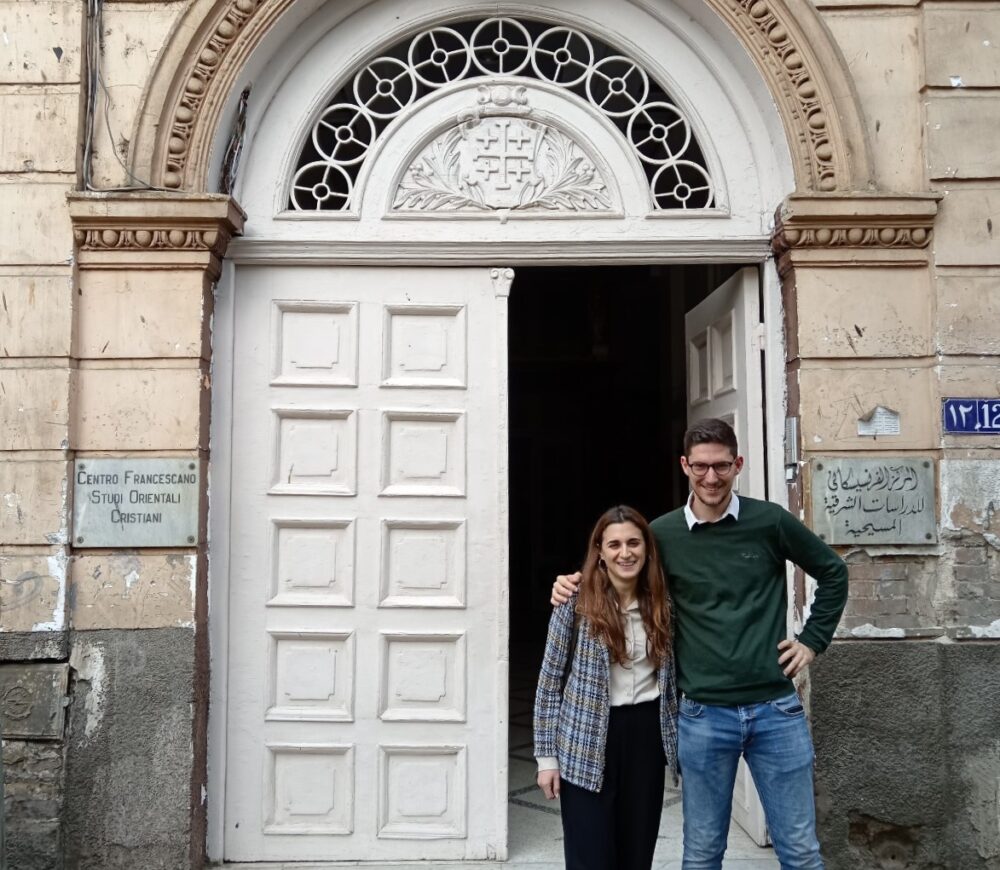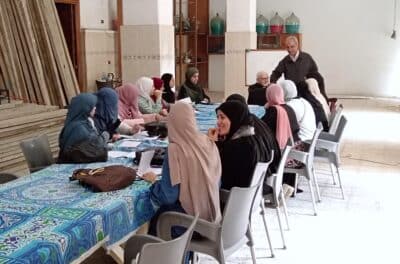"Telling the story of Musky Convent is important to tell the story of Cairo, the changing landscape and its inhabitants. The Centre's documents tell us about the city and the people who have passed through it, and it is essential to make the most of them: if we cannot read them, we are left with nothing but an immense room full of empty papers."

Martino Masolo, a doctoral student at the Catholic University of Milan, recently spent two and a half months in Cairo: his research project led him to Egypt within the ancient walls of the Musky convent, where the Franciscan Center for Oriental Christian Studies is located. The Center's archive is an invaluable resource for learning about the history of Christianity in the Arab world, and Masolo with his research project (conceived by the University and funded by the PNNR, with the support of Pro Terra Sancta, which has long been supporting the Musky through assistance and education projects) will investigate its contents, putting in order seventy years of documents that have never been fully catalogued.
How did you come up with the idea of focusing on Musky Convent for your PhD project?
The project stems from the desire to continue a work already initiated in Jerusalem, born from the collaboration between the Custody of the Holy Land and the Catholic University - particularly the research coordinated by Professor Edoardo Barbieri - with the support of Pro Terra Sancta: the cataloguing and digitization of the archives of the Holy Land area. In Egypt, the convent of Musky is the only one that is part of the Custody, and its Center is as rich in volumes and documents as it is immense and difficult to manage. There are still many things that have not come to light, precisely because of the amount of material and the absence of functional cataloguing; instead, it would be essential to bring them out, also to tell the story of the convent, which is fundamental to tell the story of Cairo, the change of its landscape and its inhabitants.
Why is it so important to know the history of the convent in order to understand the history of the city?
First of all for historical and chronological reasons: it has existed in the Musky district since 1632, and before becoming a Franciscan convent it was the seat of the consul of Venice. In addition to its antiquity, there is also a historical interest given by the nature of a cultural crossroads that the place has had since its origins, and which still distinguishes it today. This is where its importance lies: the history of the convent is linked to the growth of the Christian community in Egypt, from the seventeenth century until the nineteenth, when tens of thousands of faithful of various origins were in Cairo; and the Centre bears witness to this flourishing, which was founded in the fifties precisely so as not to lose its memory. In fact, in the archive, in addition to the immense library of Arab-Christian books and manuscripts (some of which are very rare, and attract people from all over Egypt and beyond), there are many documents that testify to the life of Christians who have lived in Cairo since 1600: baptism and marriage certificates, notarial and property deeds. It is a photograph that covers the stories of an entire community through the centuries, stories of people that it would be nice to be able to reconstruct and tell.
What do you think it would take, in the light of your recent fieldwork, to allow these stories to be told and to make the most of the wealth of the Center?
Certainly, an in-depth study of the contents of the archive, a systematic organization of the material and its digitization would allow a much better fruition; the Centre could host many more researchers and become an even more important and accessible point of reference than it is now. A lot of documents are still impossible to read and use as a research tool, and if we can't read them, we're left with a huge room full of empty papers. In the archive there is no subdivision into fonds, the material is kept all together; There are even documents from other convents collected together with all the others. The urgency of a rethinking of the cataloguing is evident, in fact the work was started by the friars themselves who live in the convent; I have placed myself at their side in an attempt to give order to this sunken treasure.

Will you work with them? How did they welcome your presence?
I approached one of them in particular, Father Wadi Awad. He is a man of boundless culture: he was trained in Rome under the guidance of Father Samir Khalil Samir, teaches Latin and has a deep knowledge of different methodologies for the study of documents, from archival studies to philology to paleography. Working with him is an opportunity for enrichment and constant wonder. All three friars, however, welcomed me with open arms: they are happy to have a curious person among them, and we immediately established a bond of affection. We even started reciting the Liturgy of the Hours together in Arabic!
What struck you most about the time you have spent so far in Musky, and what future prospects do you wish for your work at the Center?
Working on site in such an archive is a constant adventure: I make each new discovery myself, with my own eyes, and I find myself looking at the place where I am at the same time as it is now and as it once was. In fact, the archival documents offer a different image of the city from the one we can observe today, and through them I will be able to reconstruct in a book the history of the place and its changes. The street in front of the convent, for example, is now a large city artery where traffic flows incessantly, set in a working-class neighborhood; The documents showed me that it was once not a street at all, but a canal, surrounded by stately homes. This double gaze fills me with nostalgia for that cultural flowering of which the convent is a witness, but at the same time it gives me hope that, also through this project, it can blossom again.


















